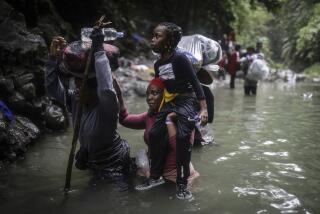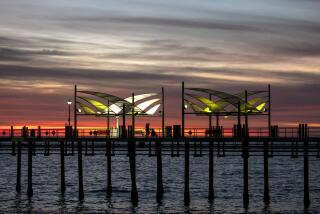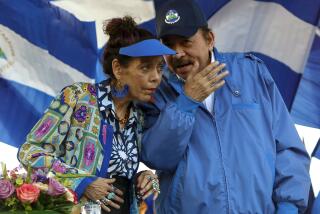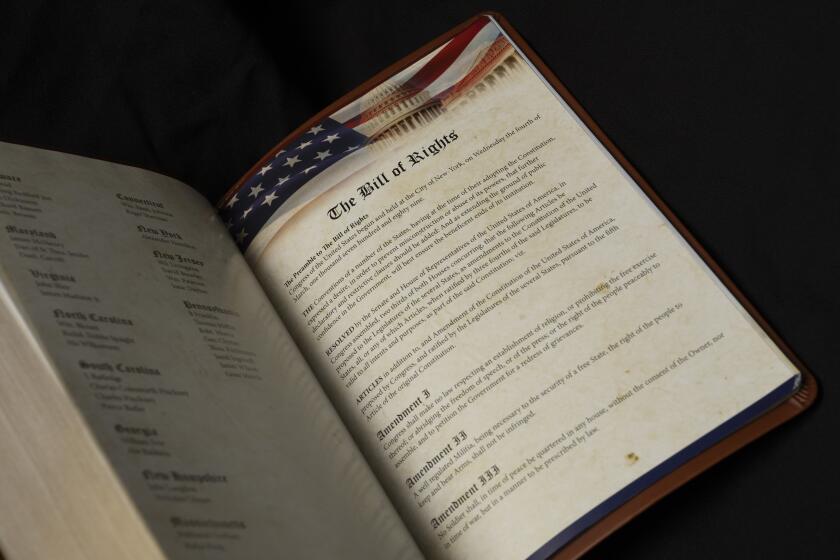American Killed by Gunman in Panama : Crime wave: A spree of attacks and robberies is ‘much worse’ than under Noriega, an official says.
PANAMA CITY — A senior American employee of the Panama Canal Commission was killed Wednesday in the latest in a series of brazen attacks that have pushed the rate of violent crime here to levels unknown under the regime of Manuel A. Noriega.
Authorities said they could detect no political motive behind the murder of the commission’s acting financial officer, William J. Joyce, who was shot by a masked intruder Tuesday night during a theft of guns and jewelry from his home near the mouth of the Panama Canal.
The attack came less than two days after a similarly violent assault on another U.S. citizen in the same neighborhood. It added to a spree of assaults and thievery that has included incidents in which teams of men armed with automatic weapons made off with $100,000 during a daylight bank robbery and forced terrorized patrons at two posh restaurants to hand over their money and jewelry.
In an interview with The Times, the commander of the new Panamanian Public Force, Col. Eduardo Herrera Hassan, blamed the extraordinary wave of violence on what he said are hundreds of dangerous criminals who remain at large after being freed from Panamanian jails during the U.S. invasion.
A U.S. official said an additional 300 former Panamanian soldiers who have not yet been accounted for also could represent a serious criminal threat.
While no comparative statistics are available, Herrera declared in an interview that the rate of assaults, murders and other crimes in recent weeks has been “much worse” than under the Noriega regime. He complained that his troops’ effectiveness in rounding up fugitives and countering the crime wave has been limited by government restrictions that prohibit them from carrying rifles or other automatic weapons.
The new indication of a more dangerous Panama contrasts with the image of tranquillity painted by U.S. officials. American military police continue to patrol the streets in jeeps while shifting much of their authority back to their Panamanian counterparts.
The outbreak of violence, in a nation in which the brutality of the old Noriega-led Panama Defense Forces deterred much street crime, raises new questions about the consequences of the tentatively planned U.S. withdrawal of its troops from the capital by next Thursday.
The warning by Herrera of the dangers posed by the roaming convicts provided the first official accounts of how little success U.S. and Panamanian authorities have had in rounding up the inmates who were set free during the invasion.
In the city of Colon alone, Herrera said, 389 of the 400 prisoners let go by the Panamanian prison warden remain at large. Indicating that the problem is of similar gravity across Panama, he declared: “The great majority of the prisoners who were freed during the invasion have not been captured.”
A U.S. source said that in addition to those who escaped from Colon, at least 250 more convicts are still on the lam, including 104 of the 160 prisoners who fled the notorious Coiba Island penal colony while American troops were taking control of the facility. Among the remainder, the source said, are more than 100 who escaped from the Carcel Modelo jail in Panama City.
Herrera made his comments about the connection between escaped prisoners and crime before the shooting of Joyce occurred. Sources close to the investigation said Wednesday night there was no indication that an escaped convict was responsible for the attack.
The attack made Joyce the first American to be killed in Panama since the invasion, which claimed the lives of 23 U.S. soldiers and three civilians, as well as 202 Panamanians. A Panama Canal Commission spokeswoman said, however, that the close-knit community of about 2,700 American employees has suffered from an unusual outbreak of muggings and other crimes against U.S. employees since the invasion, and she reported that environmental control officer David Baerg had been assaulted and robbed by an intruder in his home at daybreak Monday.
According to an account provided by the spokeswoman, Willie K. Friar, the attack on Joyce occurred Tuesday evening when a young Panamanian man rang the doorbell of the American’s home in the affluent La Boca neighborhood and asked for Joyce’s son by name.
When Mildred Joyce, the victim’s wife, opened the door, a second man, wearing a mask and wielding a revolver, emerged from a hiding place and the two entered the home together. As Joyce rose from his living-room chair, the gunman shot him in the chest.
More to Read
Sign up for Essential California
The most important California stories and recommendations in your inbox every morning.
You may occasionally receive promotional content from the Los Angeles Times.









